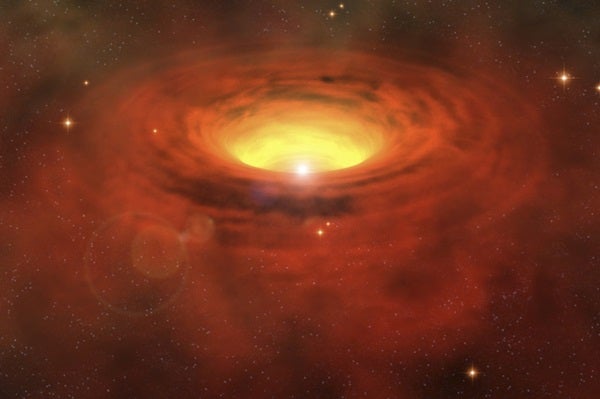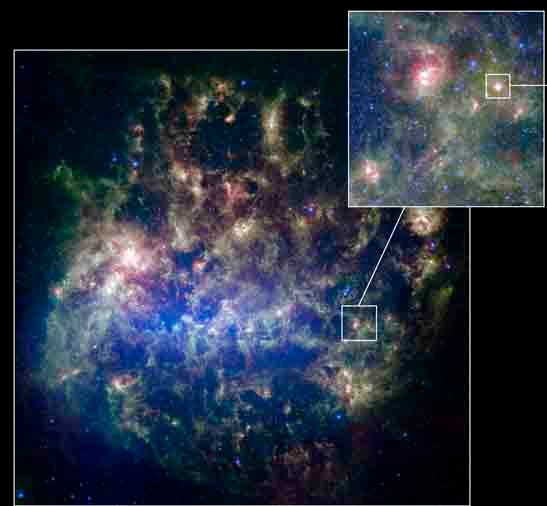By resolving, for the first time, features of an individual star in a neighboring galaxy, ESO’s Very Large Telescope has allowed astronomers to determine that it weighs almost half of what was previously thought, thereby solving the mystery of its existence. The behemoth star is found to be surrounded by a massive and thick torus of gas and dust, and is most likely experiencing unstable, violent mass loss.
WOH G64 is a red supergiant star almost 2,000 times as large as our Sun and is located 163,000 light-years away in the Large Magellanic Cloud, one of the Milky Way’s satellite galaxies.
“Previous estimates gave an initial mass of 40 times the mass of the Sun to WOH G64. But this was a real problem as it was way too cold, compared to what theoretical models predict for such a massive star. Its existence couldn’t be explained,” says Keiichi Ohnaka, who led the work on this object.
New observations, made with ESO’s VLT Interferometer, conclude that the gas and dust around the star is arranged in a thick ring, rather than a spherical shell, and the star is thus less hidden than had been assumed. This implies that the object is in fact half as luminous as previously thought, and thus, less massive. The astronomers infer that the star started its life with a mass of 25 solar masses. For such a star, the observed temperature is closer to what one would expect.
To reach this conclusion, the team of astronomers used the MIDI instrument to combine the light collected by three pairs of 8.2-m Unit Telescopes of the VLT. This is the first time that MIDI has been used to study an individual star outside our galaxy.
The observations allowed the astronomers to clearly resolve the star. Comparisons with models led them to conclude that the star is surrounded by a gigantic, thick torus, expanding from about 15 stellar radii (or 120 times the distance between the Earth and the Sun) to more than 250 stellar radii.
“Everything is huge about this system. The star itself is so big that it would fill almost all the space between the Sun and the orbit of Saturn,” says Ohnaka. “And the torus that surrounds it is perhaps a light-year across! Still, because it is so far away, only the power of interferometry with the VLT could give us a glimpse on this object. “











